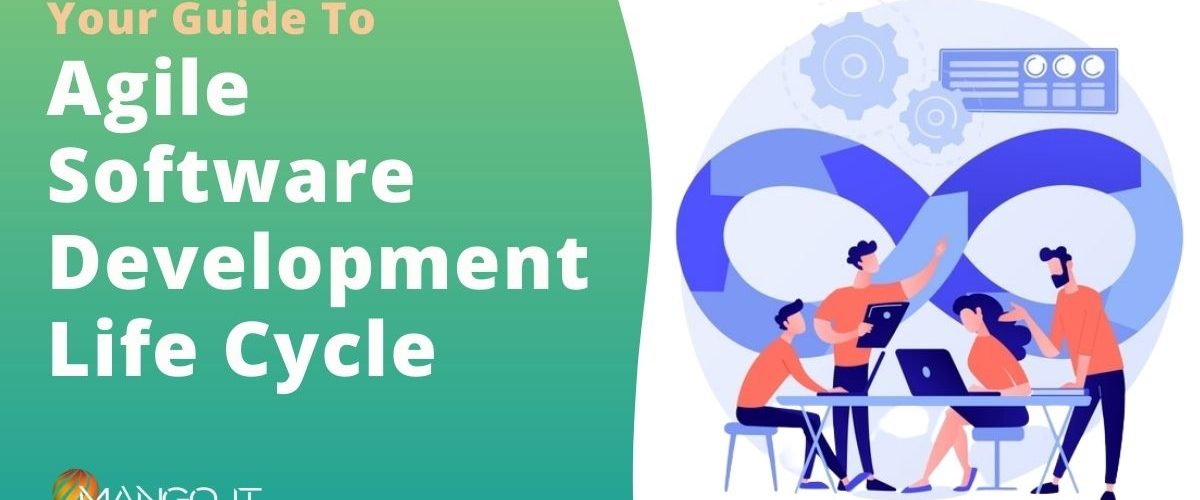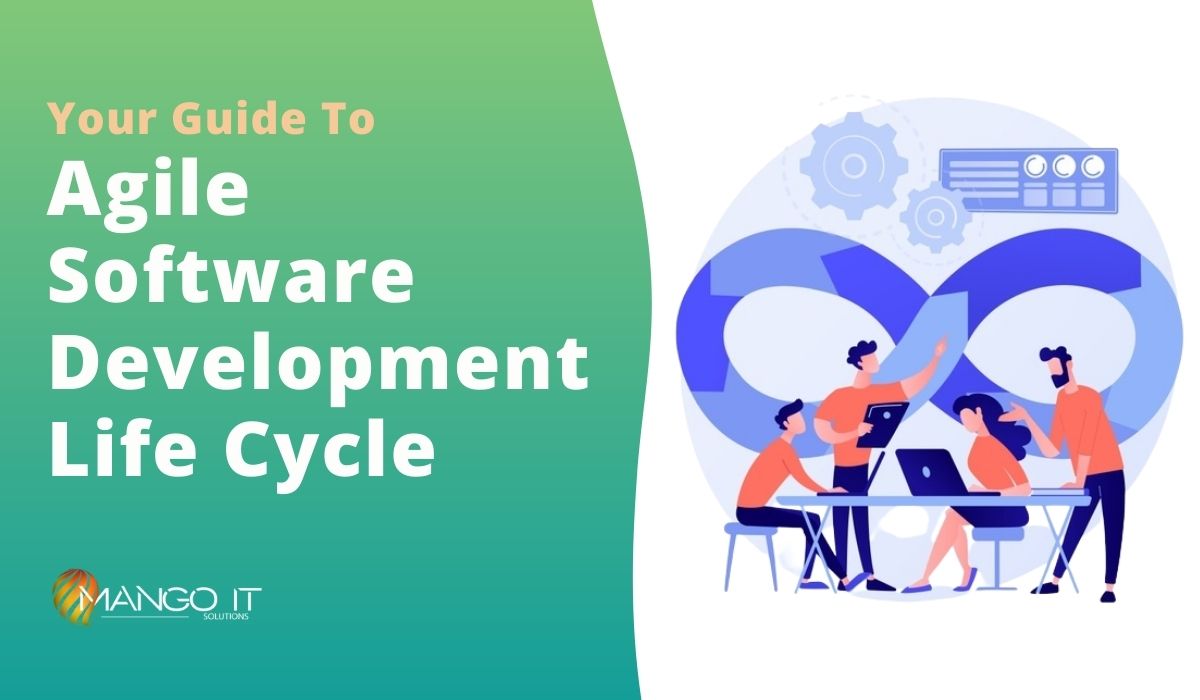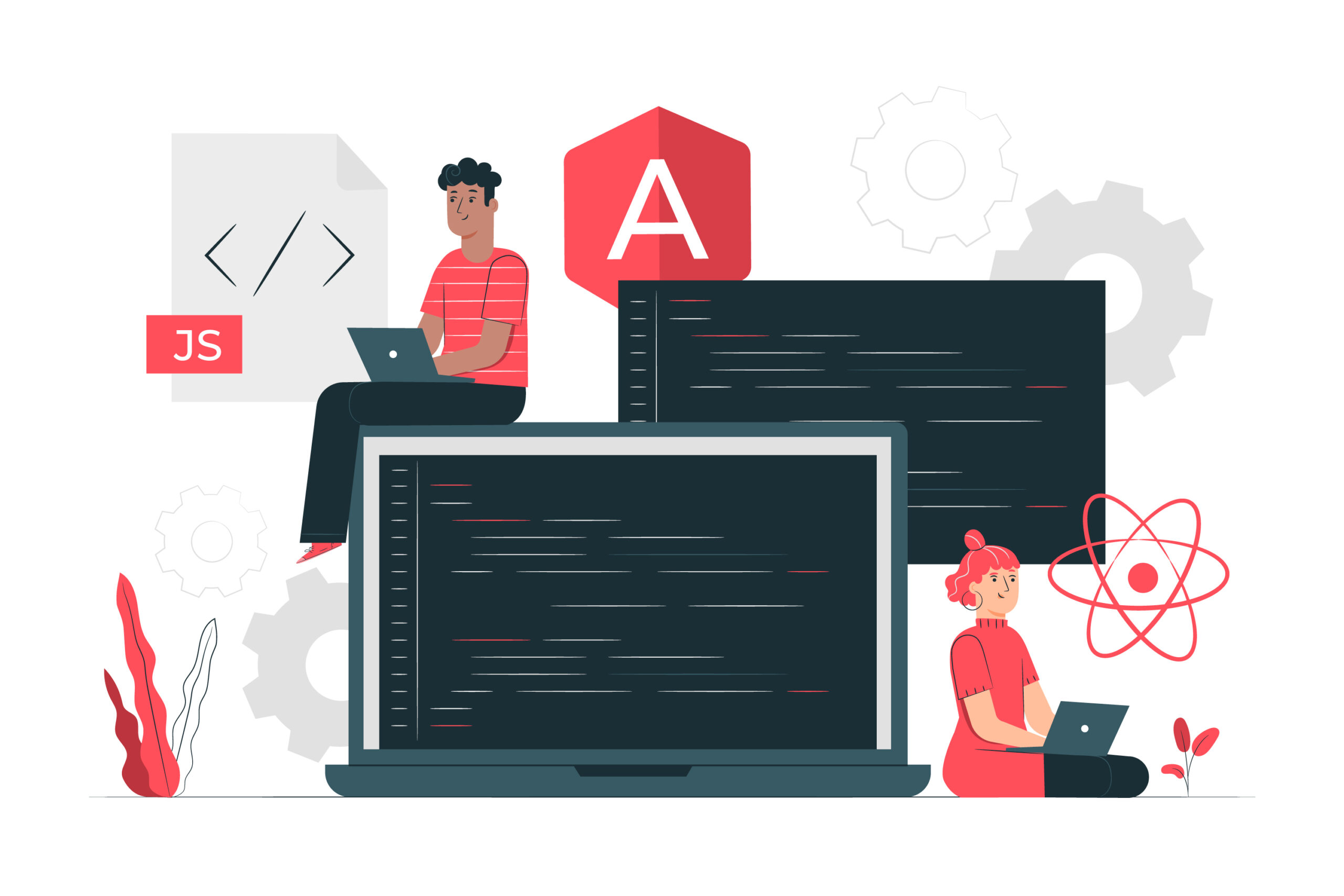
Your Guide To Agile Software Development Life Cycle
No matter how complex software you’re going to build, outlining the agile software development process will always make life a little easier for you. A thorough planning of each step of the software development life cycle will help you deliver the projects much more efficiently. With the technological world evolving faster than ever, the basic software development process has almost been the same since the very beginning. Surely, there have been some tweaks but the template has been the same.

The Definition!
An agile software development life cycle is a systematic series of stages that a product goes through as it gets built. This lifecycle mainly consists of six stages: concept, inception, iteration, release, maintenance, and retirement.
Agile SDLC is a flexible approach to software development for a fast-paced environment and changing customer needs. It aims to deliver the working software quickly, adapt to the changes arising during the process, and constantly improve it.
Phases of an Agile Software Development LifeCycle
As mentioned earlier, the agile SDLC comprises six different phases. So it’s time to decode each phase precisely.

Requirement Analysis
First up is the requirement gathering phase. The goal here is to understand the scope of the project. The key requirements are gathered from the client and then a document is prepared to outline them which also includes the features that will be supported and the proposed end results. The time and cost of the project is also estimated in this phase itself. This phase sets the tone for commencing the execution for the project. This phase usually takes at least 4 weeks and is further divided into 2 stages: requirements elicitation and requirement specification.
For a Successful Agile Implementation – Hire Certified Scrum Master
Designing
Once you’re done with the requirement analysis, it’s now time to decide the look and feel of your project. This stage involves participation of the designer, product manager, business analyst, and all the stakeholders. This stage is where you decide how the product will look from both the perspectives: the architecture and the UI/UX. The design process starts with a dummy of both the user interface and the architecture. This further involves input from stakeholders to map out the requirements on a diagram to determine the overall product functionality. Regular check-ins ensure that all requirements are built into the design process.
Development
This is the phase where agile software development actually begins. This is where the team puts the medal on the pedal and starts working on the iteration. The end result of these iterations is a working software. The first iteration consists of just the necessary functionalities. But with each new cycle, more features are added and the product is improved until it is completely developed. The duration of iteration is based on the Agile framework you’ve opted for which is generally one to four weeks. A number of iterations are conducted during the lifecycle, each passing through the users’ and stakeholders’ feedback.

Testing
This phase is all about making sure that the software you’ve built meets the requirements that you gathered in the first phase. This is where the Quality Assurance (QA) team steps in.The product here is almost ready for release. But before the final software goes into production, it goes through meticulous tests: quality checks, user tests, functionality tests, debugging, and the issues are solved. The ultimate goal here is to ensure bugless, smooth, and seamless market releases. This is an ongoing process that continues until the software is entirely free of bugs and meets the requirements.
Deployment and Maintenance
This is the milestone phase of the agile software development life cycle. The tested version of the product from the previous phase is launched into the market for beta testing. These are selected users who give feedback and if any bug comes up during this stage, developers fix them immediately. Thus, a new, improved version is rolled out afterwards. The deployment stage also includes further software maintenance and its constant strengthening. The team ensures it works smoothly and resolves any arising issues.
EndNote
There’s no denying the fact that the agile software development life cycle is the most popular one in the industry as it enables you to embrace the ever-changing customer needs. Additionally, it’s considered an ideal process for reducing time-to-market, enhancing flexibility, and improving client satisfaction. From small startups to large cap organizations, everyone these days is adopting agile SDLC and have had massive success because of it. If you’re someone who wants to focus more on building the product more than anything else, then perhaps an agile approach is perfect for you.





